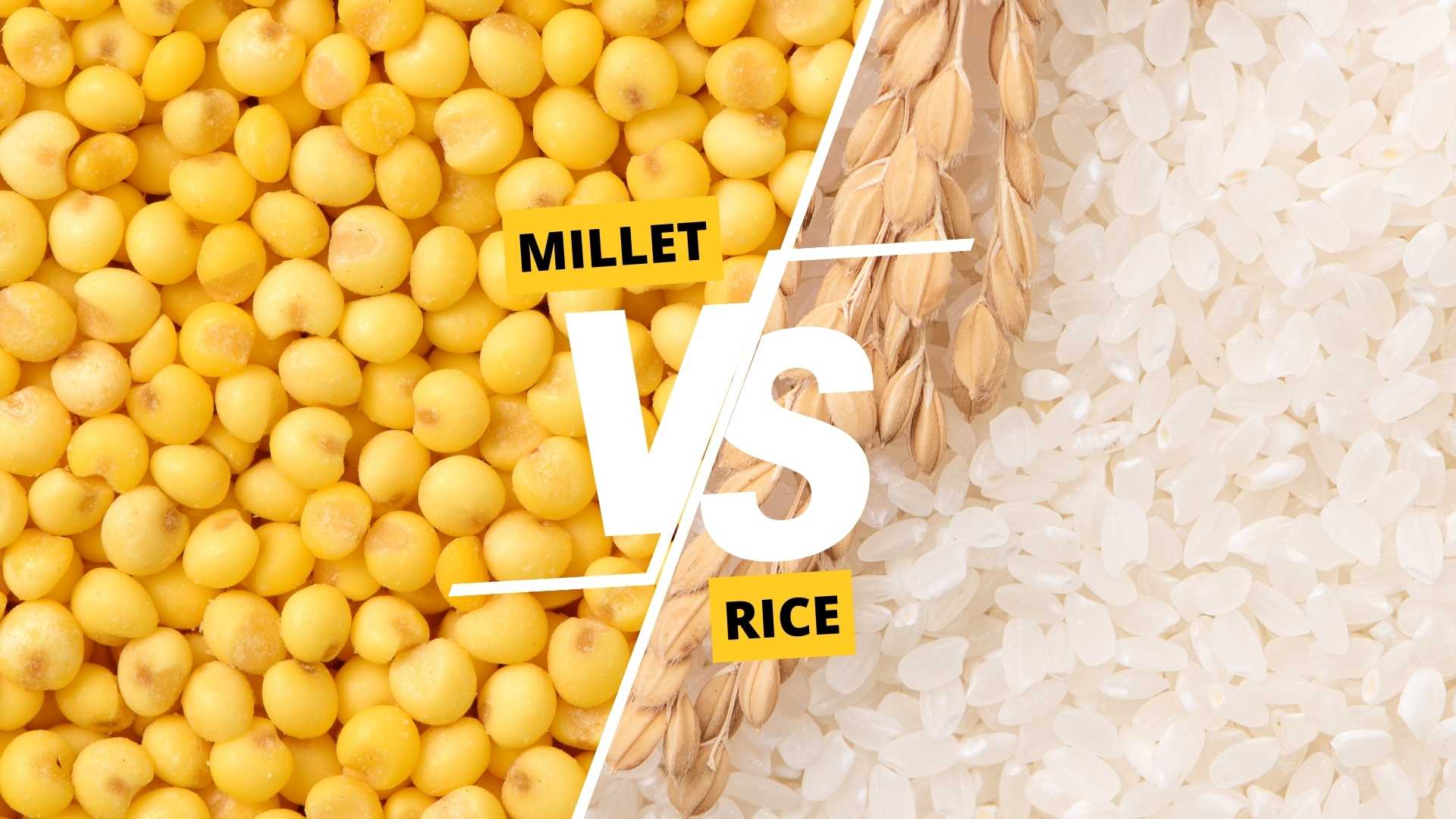Millet and rice are two grains that have been used as staple foods for centuries. Millet is a small, round grain that comes in different varieties, such as pearl, finger, and foxtail. Rice, on the other hand, is a long, slender grain that is a staple in many parts of the world. Both grains are rich in carbohydrates and are often used as a base for many dishes. Choosing the right grain for your diet is important for optimal health and nutrition.
Comparison of Millet vs Rice
Nutritional Comparison
Millet and rice have similar calorie content, but their nutritional value differs. Millet is a good source of protein and fiber, as well as magnesium, phosphorus, and B vitamins. It is also gluten-free, making it a good option for those with celiac disease or gluten intolerance.
Rice, on the other hand, is a good source of carbohydrates and is often fortified with iron and other nutrients. However, rice is also high in carbohydrates and may cause blood sugar spikes in some individuals.
Health Benefits of Millet
Millet has been found to have several health benefits, including reducing the risk of chronic diseases such as diabetes, heart disease, and cancer.
Studies have shown that millet can help regulate blood sugar levels and reduce inflammation in the body. It may also help improve digestion and promote healthy gut bacteria.
Health Benefits of Rice
Rice also has several health benefits, particularly when it comes to digestive health. It is gentle on the digestive system and may help reduce symptoms of diarrhea and constipation. Brown rice, in particular, is a good source of fiber and may help reduce the risk of heart disease and certain types of cancer.
Weight Loss and Management
Both millet and rice can be incorporated into a weight loss or weight management diet. However, millet has a lower glycemic index and may be more effective in regulating blood sugar levels and promoting satiety. Rice, particularly brown rice, is also a good option for weight loss as it is high in fiber and can help keep you full for longer.
Cooking and Recipes
Millet and rice can be used in a variety of dishes and cuisines. Millet can be cooked like rice or used in salads, stews, and porridge. It can also be used to make gluten-free bread and other baked goods. Rice is a staple in many Asian and Indian cuisines and can be used in stir-fries, sushi, and curries. Brown rice can also be used in salads and bowls.
Environmental Impact
Millet is a hardy crop that can grow in poor soil and does not require as much water or fertilizer as rice. It is also drought-resistant and can be an important crop in areas affected by climate change.
Rice, however, requires a lot of water and is often grown in regions with water scarcity, leading to environmental issues such as water depletion and soil erosion. Rice farming also contributes to greenhouse gas emissions through methane production in flooded fields. Millet, on the other hand, is a low-impact crop that can contribute to soil health and reduce erosion.
Accessibility and Affordability
Rice is a widely available and affordable crop, particularly in countries where it is a staple food. However, in some regions, such as parts of Africa, millet may be a more accessible and affordable option due to its ability to grow in harsher conditions. The cost of both grains can also be affected by factors such as transportation, processing, and trade policies.
Conclusion
In conclusion, millet and rice are both nutritious grains that can be incorporated into a healthy diet. Millet has unique health benefits and is a good option for those with gluten intolerance, while rice is a good source of carbohydrates and can promote digestive health.
When choosing between millet and rice, consider factors such as nutritional value, accessibility, and environmental impact, as well as personal preferences and dietary restrictions. Both grains can be used in a variety of dishes and cuisines, making them versatile options for a balanced diet.





